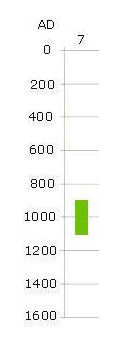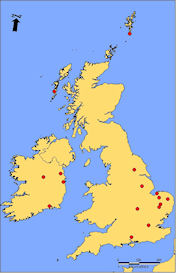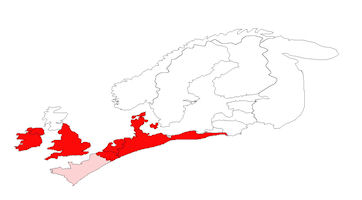
|  |
 |
 [Legend] |
 |

|  |
 |
 [Legend] |
 |
Type 7 combs have connecting plates of deep plano-convex section, and exhibit a range of irregular profiles. Some feature connecting plates that are markedly bowed, or concavo-convex in profile, while others are much straighter. Endplates are often 'winged'. Invariably, Type 7 combs are larger and less uniformly manufactured than examples of Type 6, and may be distinguished from Type 5 (with which they share similar proportions) by reference to their more irregular profile, and the fact that their connecting plates are narrower in width, and deeper in section than the latter. In practice, classification of a given comb as Type 5, 6 or 7 is relatively straightforward when based simply upon overall morphology and dimensions. Similarly, though there is considerable variability within Type 7, examples of this form can be distinguished from Type 2b on the basis of a greater degree of morphological and ornamental regularity in the latter, as well as a shallower connecting plate section, and a less restricted range of decoration. Nonetheless, Type 7 may perhaps be seen as a progression from this more ornate precursor, at least in the English context. Type 7 may be identified with Class F2 in Dunlevy's (1988) classification of Irish combs. Dunlevy dates the group to the period between the late 9th and 12th centuries, but in England, Ireland, and the southern Baltic region, most examples can be assigned to the years between AD 900 and 1100.
The comments facility has now been turned off.
© Internet Archaeology/Author(s)
University of York legal statements | Terms and Conditions
| File last updated: Tue Sep 20 2011